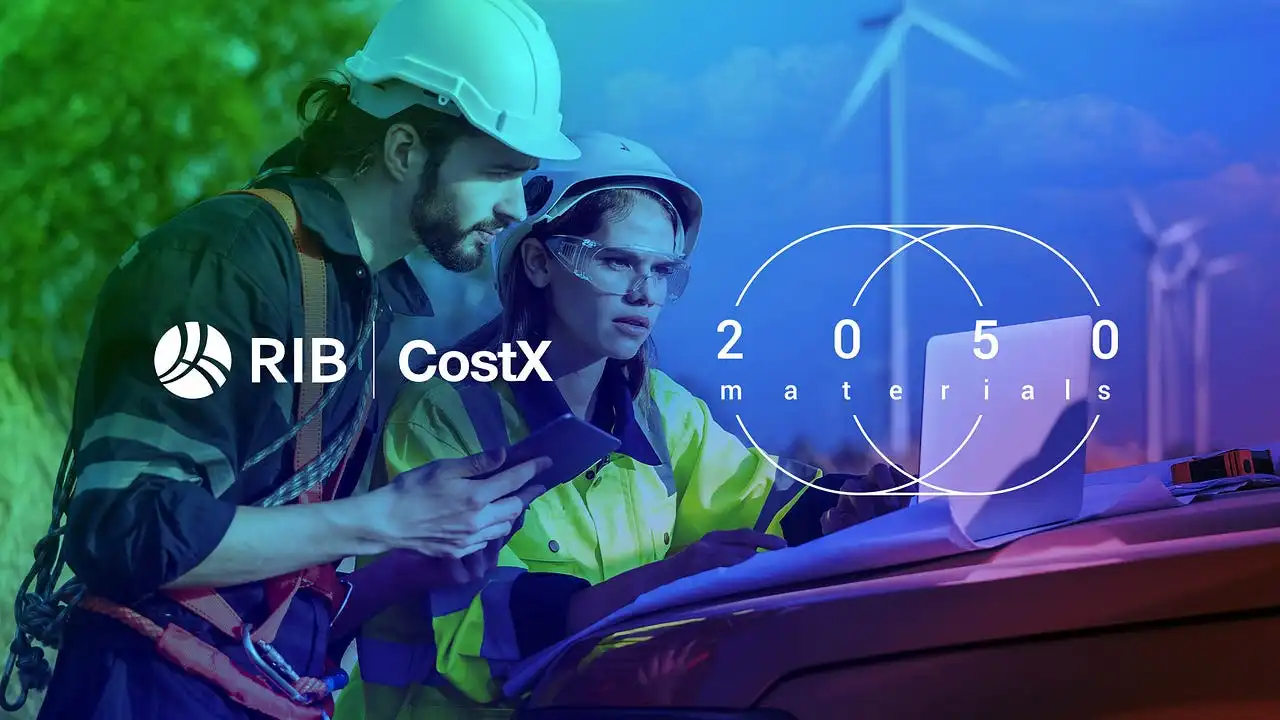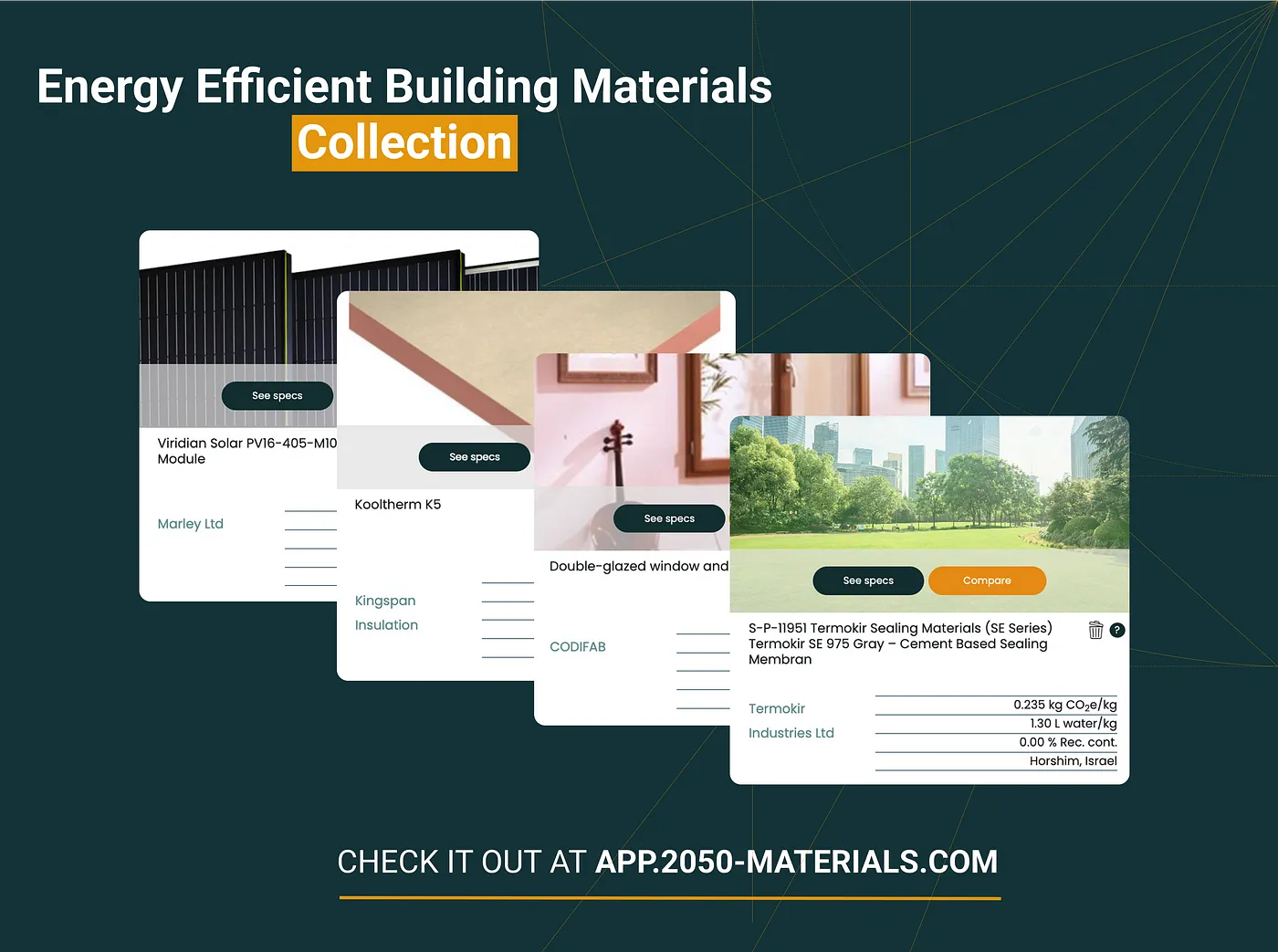Quantity Surveying and Carbon: Integrating Sustainability into Cost Management
Executive Summary
The construction industry is undergoing a significant transformation as it grapples with the challenge of reducing its substantial carbon footprint. Quantity Surveyors (QS) are increasingly recognized as key players in this transition, leveraging their expertise in cost management to include carbon assessments in their work. This article explores the evolving role of QS in integrating carbon metrics with cost analysis, supported by data from 2050 Materials. By providing carbon rate libraries classified according to multiple classification systems, 2050 Materials empowers QS firms to meet the rising demand for climate accounting in construction.

Introduction
As the global community intensifies its efforts to combat climate change, the construction industry faces mounting pressure to adopt sustainable practices. The sector is responsible for 39% of global carbon emissions, with 11% attributed to embodied carbon from construction materials and processes according to the World Green Building Council.
Quantity Surveyors, traditionally focused on cost management, are now pivotal in driving sustainability through carbon accounting.
 This article dives into the integration of carbon metrics into QS practices and highlights the tools and data provided by 2050 Materials to support this critical transition.
This article dives into the integration of carbon metrics into QS practices and highlights the tools and data provided by 2050 Materials to support this critical transition.
Problem Statement
The construction industry’s significant contribution to global carbon emissions necessitates a paradigm shift in how projects are planned and executed. Integrating carbon metrics with cost analysis is essential to ensure that sustainable practices are not only adopted but also financially viable. Quantity Surveyors, with their expertise in cost estimation and management, are uniquely positioned to lead this change. However, they require robust data and tools to accurately assess and manage carbon footprints throughout the project lifecycle.
Why Quantity Surveyors are perfectly placed to have a leading role in managing embodied carbon

Chart from Atkins Reali
The construction industry is a major contributor to global carbon emissions, with 39% of emissions coming from this sector and 11% specifically from embodied carbon in construction materials and processes. To address this, it’s crucial to integrate carbon budgets into construction cost budgets right from the start of a project. Quantity surveyors (QS) are becoming key players in managing these carbon budgets effectively. Their expertise in cost management and data analysis enables them to track and estimate carbon emissions throughout all design stages. This not only helps QS firms submit more competitive bids but also opens up new revenue streams.
Quantity surveyors are perfectly suited to handle carbon budgets for several reasons:
- Expertise in Quantification and Costing: QS professionals have a deep understanding of construction processes and materials. By including carbon data in their cost estimates, they can accurately track the carbon footprint of different building elements or designs.
- Data Analysis and Reporting: QS professionals are skilled in collecting, analyzing, and interpreting data. This allows them to measure and track a project’s carbon footprint throughout its lifecycle, identify areas for improvement, and propose strategies to optimize carbon performance without exceeding the budget.
- Cost-Benefit Analysis: QS can conduct analyses to assess the financial viability of sustainable design solutions. By quantifying potential savings and return on investment, they help stakeholders justify carbon reduction measures.
- Collaboration and Coordination: QS professionals excel at working with various project stakeholders. They facilitate the integration of carbon considerations into design, procurement, and management processes, ensuring all parties are aligned with carbon reduction goals.
- Whole Life Carbon Costing: QS can estimate the carbon emissions associated with each phase of a project, from design to construction to completion. This comprehensive approach helps assess the project’s carbon impact over its entire lifecycle.
As environmental regulations and standards evolve, QS professionals’ knowledge ensures compliance, reducing legal and reputational risks. Quantity surveyors are essential partners in creating a more sustainable built environment, extending their impact beyond just cost management.
Detailed Content
Background and Context
The construction sector’s impact on climate change has prompted a reevaluation of traditional cost management practices. Quantity Surveyors are now tasked with incorporating carbon assessments into their analyses, influencing design decisions to favor sustainability. This shift aligns with global initiatives to reduce carbon emissions and achieve net-zero goals.
Role of Quantity Surveyors in Carbon Management

Illustration from JLC online
Expertise in Quantification and Costing
Quantity Surveyors are experts in cost management, possessing a detailed understanding of construction processes and materials. This expertise forms the foundation for managing carbon budgets. By including embodied carbon data in their estimates, QS can assess the cost implications of different building elements and design configurations at all project stages.
 A new term in the industry: "Carbon Budgets"
A new term in the industry: "Carbon Budgets"
Data Analysis and Reporting
QS professionals excel in collecting, analyzing, and interpreting data. This skill set is crucial for managing carbon budgets, as it enables QS to track and measure a project’s carbon footprint throughout its lifecycle. By identifying areas for improvement and proposing strategies for carbon optimization, QS ensure that projects meet both financial and environmental goals.
Whole Life Carbon Costing
Incorporating whole life costing into QS practices allows for a comprehensive assessment of a project’s carbon impact over its entire lifecycle. This approach considers not only initial expenditures but also long-term costs and benefits, making sure that sustainable solutions are future-proof and financially sound.
Tools and Data from 2050 Materials

One of the biggest challenges facing the construction industry is the lack of digitized, structured and trustworthy product sustainability data. 2050 Materials’ API provides access to product-specific and generic material/system data, broken down into various sustainability factors such as carbon emissions, circularity, and health impacts.
2050 Materials provides Quantity Surveyors with access to extensive carbon rate libraries, classified according to industry-standard systems such as NRM1, Uniclass, CAWS, and others. This data is essential for accurate carbon accounting and supports QS in several key areas:
Integration of Carbon Factors
By incorporating carbon factors for various materials into cost estimating software, QS can streamline the process of carbon budgeting. This integration ensures that carbon assessments are an integral part of cost analysis from the outset.
Enhanced Reporting and Transparency
The detailed and structured data provided by 2050 Materials platform allows QS to generate comprehensive reports that communicate the carbon footprint of projects clearly to stakeholders. This transparency fosters accountability and supports informed decision-making.
Compliance with Regulations
Adherence to environmental regulations and standards is critical in the evolving regulatory landscape. 2050 Materials’ data helps QS navigate these requirements, ensuring compliance and minimizing legal and reputational risks associated with carbon management.
Software integrations
Having interoperable data allows 2050 Materials and its clients to integrate this data into popular take-off and estimation tools used, like CostX, Candy, Procore Esticom, and more.
Case Studies
Early Involvement in Sustainable Design
Early engagement of QS in project planning has proven to be effective in achieving sustainable outcomes. By integrating carbon metrics from the initial stages, QS can influence design choices to favor low-carbon materials and construction methods. This proactive approach is supported by data from 2050 Materials, enabling QS to make informed recommendations.
Cost-Benefit Analysis of Sustainable Solutions
QS have successfully used cost-benefit analyses to justify the adoption of sustainable design solutions. By quantifying potential savings and return on investment, QS can demonstrate that sustainable practices are not only environmentally beneficial but also economically viable. The comprehensive data from 2050 Materials enhances the accuracy of these analyses.
RIB Software Partners with 2050 Materials for its RIB CostX software application

RIB Software partners with 2050 Materials for its RIB CostX software application
2050 Materials partners with CostX in a mission to empower industry professionals with the tools needed to contribute to a sustainable built environment. This strategic partnership with RIB Software integrates 2050 Materials’ carbon rate libraries into CostX’s leading cost estimation software. More information on the partnership in this press release.
Reach out to us for more information on how we can help you integrate carbon in your cost estimates by entering your name & email below.
Conclusion
The integration of carbon metrics with cost analysis is imperative for the construction industry to meet its sustainability goals. Quantity Surveyors are at the forefront of this transformation, leveraging their expertise in cost management to include carbon assessments. With the support of 2050 Materials’ extensive data and tools, QS can effectively manage carbon budgets, ensure compliance with regulations, and drive the adoption of sustainable practices.
By embracing their evolving role and utilizing robust carbon rate libraries, Quantity Surveyors can lead the construction industry towards a more sustainable future, balancing financial and environmental performance.
References
- Clean Energy Finance Corporation (CEFC) Report — Transparency Portal
- Value Toolkit — UK Government’s Construction Innovation Hub
- Government Construction Strategy (2011) — Cabinet Office
- Bringing embodied carbon upfront — World Green Building Council
- Quantity Surveying vs Climate Change — how can cost management go green? — Matthew Bliss CertRP
- Quantity Surveyors Role in Quantifying Embodied & Operational Carbon —Sourceable
- The Role of the Surveyor in Climate Change Action — The Quantity Surveyor
- Do Quantity Surveyors have a role in Reducing Carbon Emissions? — The Quantity Surveyor
- Sustainable Development in the Surveying Profession — Society of Chartered Surveyors Ireland
- G&T’s Observations — GT Market Intelligence
- Increasing carbon literacy in the C-suite — Construction Management
Related articles

The Most Interesting Low Carbon Products in Office Design
In this article and collection, we highlight 11 outstanding products that contribute to a lower carbon footprint in office design.
Read more
Top Low Carbon Building Boards: Performance, Benefits, and Use Cases
The building boards highlighted in this article and collection showcase low-carbon innovation in modern construction.
Read more
11 Interesting Energy Efficient Building Materials for Reduced Environmental Impact
Discover a collection of energy efficient building materials that not only reduce greenhouse gas emissions but also contribute to long-term durability.
Read more